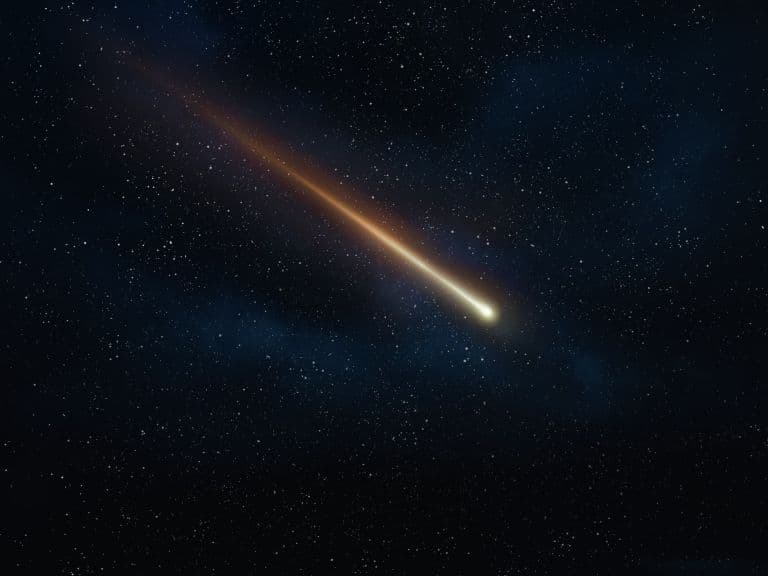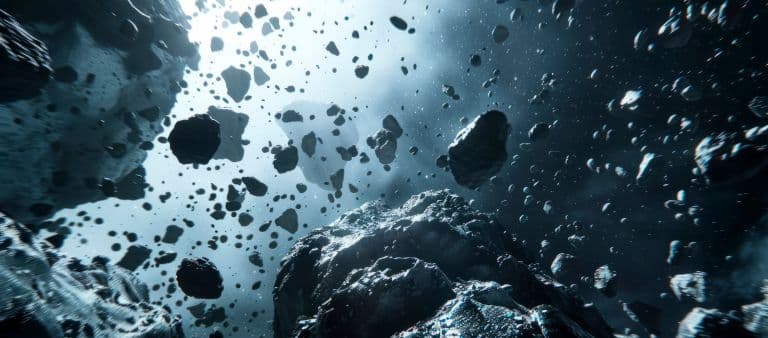“Space is big. You just won’t believe how vastly, hugely, mind-bogglingly big it is. I mean, you may think it’s a long way down the road to the chemist’s, but that’s just peanuts to space.”
― Douglas Adams, The Hitchhiker’s Guide to the Galaxy
And categorising it all can get pretty confusing, especially since almost everything in it is a version of rock, gas or ice defined more by its behaviour than what it’s made of.
Even in our local cosmic neighbourhood, there’s junk everywhere. Belts of rubble and rock, for example, orbiting the sun between the more familiar planetary bodies.
Among all this celestial gravel are asteroids and meteors, two common victims of mistaken identity. Although they’re both mindless lumps of sterile rock or metal travelling alarmingly fast through space, their differences become clear once you know where they are and how they behave.
So, what really is the difference between an asteroid and a meteor? Let’s take a closer look.

The TL;DR
In the simplest terms, an asteroid is a rock or metallic object orbiting the Sun – typically found in the asteroid belt between Mars and Jupiter, but they can be found elsewhere in the solar system as well. A meteor, on the other hand, is the streak of light we see in the sky when a piece of space debris (often from an asteroid or comet) enters Earth’s atmosphere and burns up.
Put another way: an asteroid is still out there in space, following its solar orbit, while a meteor is what causes that bright flash as it makes a fiery collision with Earth’s atmosphere, and even – in some instances – the land itself.
For a bit of additional info, when some of a meteor does make it all the way to the ground, that fragment is called a meteorite.
Read on for the detail.
The Difference Between an Asteroid and Meteor
The simplest way to understand these differences is to look at their respective environments.
Asteroids exist in the vacuum of space, sometimes passing close to Earth but more often located in the main asteroid belt.
In contrast, meteors aren’t separate objects floating in space – rather, they’re the visible phenomena produced as a particle from space plummets through Earth’s atmosphere.
This may or may not be an asteroid as well, but regardless of what that object is, when it streaks across the sky as a “shooting star”, it’s a meteor.
Below, we’ll explore in more depth exactly what each of these terms means, how they form, and why the distinction matters.
What Is an Asteriod?
Asteroids are sometimes called mini planets.
Lie planets they’re typically found orbiting the sun, but differ from true planets by not conforming to two of the three characteristics of a planet – namely – that they are “big enough to have enough gravity to force it into a spherical shape”, and “big enough that its gravity has cleared away any other objects of a similar size near its orbit around the Sun”. –NASA.
This means asteroids share their orbits with other rocky bodies and are generally not very round.
Asteroids are also therefore smaller than planets, ranging from the 530km asteroid known as Vesta to the relatively petite boulders of only around 10 metres or so across.

While there are tens of thousands of asteroids, their combined mass is still less than that of Earth’s moon. So, they’re essentially a gritty ring orbiting the sun, mostly between Mars and Jupiter.
They’re the dusty remnants from the violent collisions present in the formation of the early solar system and are therefore ancient relics of a forgotten past!
Asteroids are predominantly made of heavy elements like metals and various rocks but can also be made mostly of dust and other boring stuff too.
What Is a Meteor?
A meteor, also called a shooting star, is more of a phenomenon than an object.
It is what we call the fireball of light that tears across the sky at night. These can be single, freak occurrences or part of a large celestial event known as a meteor shower, and the object that causes this is known as a meteoroid.
The meteoroid itself can be any number of things – including, even, an asteroid – but the meteor is the visual effect it makes as it enters Earth’s atmosphere.

The vast majority of meteors are caused by comets, which blaze past the sun leaving a long trail of dirty ice and grit in their wake. As the Earth orbits the sun, each year it ploughs through this wake and experiences thousands of meteors in quick succession. This is a meteor shower.
Meteors can range from barely visible to bright enough to light up the night sky, and they can form various colours depending on the content of the meteoroid. The light phenomenon itself is caused by the immense compression of the atmosphere as the object hits it at up to 40 km/s. This creates tremendous heat, which burns the object up and releases its energy as light.
If any of it survives this assault to make contact with the ground, and then will be known as a meteorite – the -ite suffix meaning “rock” (as in granite, magnetite, coprolite, etc.).
Summary
Asteroids are rocky bodies orbiting the sun, mostly found in the asteroid belt between Mars and Jupiter. They range from a few metres to hundreds of kilometres across and mostly stay put, but can be pulled or knocked out of orbit and may on occasion make contact with the Earth.
If this happens, a bright streak appears in the sky: a meteor. But just as not all asteroids become meteors, not all meteors are asteroids – most are caused by bits of comet.
And any asteroids that make it to Earth are, by definition, no longer asteroids but meteorites.